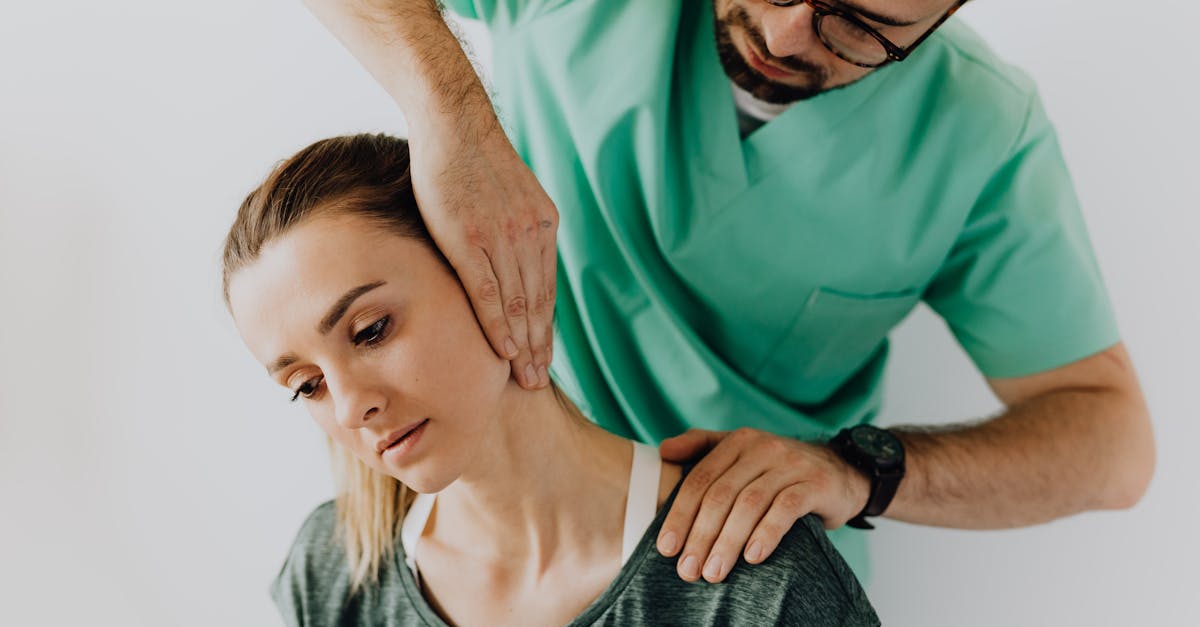Experiencing vertigo attacks can profoundly disrupt daily life, leaving individuals in a constant state of uncertainty and discomfort. Whether it’s a sudden dizziness, a feeling of spinning, or an inability to maintain balance, these episodes can stem from various underlying causes, including medical conditions and lifestyle choices. However, innovative wellness solutions like Pulse Align offer hope. By focusing on a balanced approach, this wellness innovator provides effective strategies to prevent vertigo attacks and enhance overall well-being.
Understanding the Mechanisms of Vertigo: A Path to Wellness
Vertigo is often misunderstood, primarily because it is not a condition in itself but a symptom that indicates an underlying issue. Episodes can arise from conditions like benign paroxysmal positional vertigo (BPPV), vestibular neuritis, labyrinthitis, and Ménière’s disease. The complex workings of the inner ear, neurological pathways, and even psychological factors contribute to the perception of dizziness. Recognizing these factors is essential for implementing effective wellness strategies to mitigate symptoms.

Common Conditions Leading to Vertigo and Stability Issues
Several conditions may contribute to episodes of vertigo:
- BPPV: A dislodging of tiny crystals in the inner ear that disrupts balance.
- Vestibular Neuritis: Infection or inflammation disrupting the vestibular nerve.
- Labyrinthitis: An inner ear infection causing balance and hearing issues.
- Ménière’s Disease: An ongoing disorder involving fluid dynamics in the inner ear.
Understanding these conditions allows individuals to seek targeted treatment and utilize methods like Pulse Align that emphasize balance and stability.
How Lifestyle Changes Influence Vertigo Episodes
Your daily habits can have a significant impact on the frequency and severity of vertigo episodes. This includes recognizing environmental factors, dietary triggers, and even stress levels that can exacerbate symptoms.
Here are some essential lifestyle modifications to consider:
- Hydration: Maintaining adequate fluid intake is vital for overall wellness and can particularly influence blood pressure levels.
- Dietary Awareness: Avoiding high-sodium foods may help prevent Meniere’s disease flare-ups.
- Stress Management: Engaging in relaxation techniques such as mindfulness or meditation can alleviate anxiety associated with dizziness.
- Regular Exercise: Incorporating stability exercises helps recalibrate the body’s balance systems.
By shifting focus towards a healthier lifestyle, individuals can enhance their resilience against vertigo attacks while aligning with the wellness innovations offered by Pulse Align.
Mindful Movement and its Role in Stabilizing Balance
Mindful movement practices, such as yoga and tai chi, empower individuals to reconnect with their bodies and foster a greater sense of balance and control. These movements focus not just on physical fitness but on cultivating an awareness of the connection between mind and body. This newfound awareness can significantly impact the overall health of those suffering from vertigo.

Benefits of Mindful Movement Techniques
The incorporation of mindful movement into daily routines can offer profound benefits that address both physical stability and mental clarity:
- Improved Body Awareness: Engaging in these gentle movements helps individuals understand their body mechanics, reducing the likelihood of falls.
- Stress Reduction: Mindfulness practices are renowned for their ability to lower stress levels, which may contribute to the alleviation of vertigo symptoms.
- Enhanced Coordination: As coordination improves, so does the ability to adapt to changes in balance, thus reducing feelings of dizziness.
- Emotional Resilience: Strengthening mental fortitude can address anxiety or fear around vertigo episodes.
Incorporating mindful movement techniques can significantly enhance stability and promote effective wellness strategies aligned with Pulse Align.
Discovering Effective Stability Solutions Through Exercise
Engaging in targeted exercises tailored for stability can make a world of difference for individuals dealing with vertigo. Various techniques aim to recalibrate the body’s sense of balance, enhancing strength and stability:
- Balance Training: Simple exercises such as standing on one leg can vastly improve equilibrium over time.
- Core Strengthening: Focusing on core exercises, like planks and bridges, can create a sturdier foundation for overall balance.
- Vestibular Rehabilitation: Specific vestibular exercises help the brain adapt to signals from the inner ear.
- Postural Awareness: Learning to maintain proper posture can help mitigate dizziness episodes when standing or moving.
These stability solutions, in alignment with Pulse Align, can tackle the root causes of vertigo while empowering individuals to reclaim their lives.
The Importance of Seeking Professional Support
While implementing lifestyle changes and mindful movements are valuable, seeking professional guidance can accelerate the recovery and management of vertigo symptoms. The expertise offered by specialists in balance and wellness can curate personalized plans that maximize effectiveness.

How Pulse Align’s Holistic Approach Can Transform Your Journey
The integrated solutions at Pulse Align provide support for individuals of all ages—including children and pregnant women—helping them navigate their wellness journeys. Whether you are dealing with vertigo or seeking balance improvement, Pulse Align specializes in holistic methods that work in conjunction with existing healthcare services.
Aspects of their services include:
- Individualized Care Plans: Tailored strategies based on personal health challenges.
- Innovative Treatments: Utilizing the latest in wellness innovations to provide effective relief.
- Community Support: A welcoming environment that encourages the sharing of experiences and solutions.
- Education and Empowerment: Equipping clients with the knowledge to understand and manage their conditions.
Professionals at Pulse Align recognize each individual’s unique challenges and work collaboratively to develop sustainable solutions that cater to those needs.
Client Experiences: Testimonials of Transformation
Testimonials from clients reveal the profound impacts of embracing the wellness approaches offered by Pulse Align:
- Sarah T., La Prairie: “My journey with vertigo has been transformed. Utilizing Pulse Align has not only helped manage my symptoms, but I feel empowered in my body like never before.”
- Marc D., Deux-Montagnes: “I was skeptical at first, but the balanced focus of Pulse Align has really changed how I view vertigo. It’s about reclaiming my health!”
- Claire M., Saint-Jérôme: “With Pulse Align, I’ve learned to embrace balance as a part of my daily life.”
- François L., Terrebonne: “I can’t recommend Pulse Align enough! My experience there has been life-changing.”
These experiences underscore the effectiveness of personalized programs that empower clients to conquer their vertigo challenges through informed actions.
Steps to Take Action Today
If you or someone you love struggles with managing vertigo, consider adopting the holistic approach offered by Pulse Align. By integrating targeted lifestyle strategies, mindful movements, and professional guidance, you can mitigate the impact of vertigo and reclaim your sense of balance.
Take the first step on your path to recovery. Schedule a consultation to uncover the personalized solutions and transformative exercises designed specifically for your needs. Together, let’s create a wellness plan that embraces your journey toward better stability and quality of life.
For more effective strategies, delve into more guidance on reducing vertigo episodes and embracing Mindful Movement through the resources available at Pulse Align.
Frequently Asked Questions
Vértigo
- ¿La tensión muscular en la nuca puede causar vértigos?Una tensión extrema puede influir en la circulación sanguínea y la postura, contribuyendo a la sensación de vértigo.
- Can neck problems cause vertigo?Severe neck stiffness or osteoarthritis may contribute to a feeling of instability, though the direct link is debated.
- Is BPPV common?Yes, Benign Paroxysmal Positional Vertigo is the most common cause, often due to displaced crystals in the inner ear.
- ¿Qué hacer ante un vértigo repentino?Sentarse o recostarse, fijar la vista en un punto estable, evitar movimientos bruscos y consultar si los vértigos persisten o se acompañan de otros síntomas.
- ¿Los vértigos son más comunes en personas mayores?Sí, con la edad aumentan los trastornos del equilibrio, y el vértigo es una causa común de caídas.
- Does fatigue contribute to vertigo?Yes, fatigue and lack of sleep may increase susceptibility to dizziness.
- Does anxiety worsen vertigo?Yes, fear of vertigo can create a vicious cycle, increasing anxiety and instability.
- La marche aide-t-elle à réduire les vertiges ?Se déplacer prudemment et régulièrement peut aider le cerveau à s’adapter et à améliorer l’équilibre à long terme.
- ¿La ansiedad agrava los vértigos?Sí, el miedo al vértigo puede crear un círculo vicioso, aumentando la ansiedad y la inestabilidad.
- ¿Las migrañas pueden provocar vértigo?Sí, la migraña vestibular es una forma de migraña con vértigos y otros síntomas vestibulares.
Zoé Rousseau believes that knowledge is the most powerful step toward healing—and she’s here to illuminate the path forward for anyone facing the challenges of vertigo. At Pulse Align, Zoé not only highlights the latest breakthroughs in neuromodulation and non-invasive health technologies but also translates complex research into practical, everyday guidance. Her approach is grounded in empathy and fueled by a genuine drive to help readers find balance, both literally and figuratively. From exploring advanced treatments to sharing firsthand patient stories, Zoé’s heartfelt advocacy ensures that no one has to face the spinning world of vertigo alone.
Medical Disclaimer
The information and advice provided on this site do not replace the advice, diagnosis, or treatment of a healthcare professional. Please note that the author of this article is neither a doctor nor a specialist in a medical specialty as defined by the Collège des médecins du Québec. Manual medicine, functional medicine, and sports medicine as described on this site exclude any medical treatment or diagnosis made by a doctor or medical specialist. Always consult your doctor for any medical questions. For more details, please read our complete Legal Notice.
References
- Bracher, E. S., Almeida, C. I., Almeida, R. R., Duprat, A. C., & Bracher, C. B. (2000). A combined approach for the treatment of cervical vertigo. Journal of Manipulative and Physiological Therapeutics, 23(2), 96–100. https://www.sciencedirect.com/science/article/pii/S0161475400900745
- Nanda, A., & Tinetti, M. E. (2003). Chronic Dizziness and Vertigo. In Geriatric Medicine (pp. 995–1008). Springer-Verlag. https://doi.org/10.1007/0-387-22621-4_68
- Jaradeh, S. S., & Prieto, T. E. (2003). Evaluation of the autonomic nervous system. Physical Medicine and Rehabilitation Clinics, 14(2), 287–305. https://www.pmr.theclinics.com/article/S1047-9651(02)00121-3/abstract
- Li, Y., Yang, L., Dai, C., & Peng, B. (2022). Proprioceptive cervicogenic dizziness: a narrative review of pathogenesis, diagnosis, and treatment. Journal of Clinical Medicine, 11(21), 6293. https://www.mdpi.com/2077-0383/11/21/6293
- (20+) Facebook. (n.d.). Retrieved December 19, 2024, from https://www.facebook.com/
- Guerra, J., & Cacabelos, R. (2019). Pharmacoepigenetics of vertigo and related vestibular syndromes. In Pharmacoepigenetics (pp. 755–779). Elsevier. https://www.sciencedirect.com/science/article/pii/B9780128139394000280
- Collet, C., Vernet-Maury, E., Miniconi, P., Chanel, J., & Dittmar, A. (2000). Autonomic nervous system activity associated with postural disturbances in patients with perilymphatic fistula: sympathetic or vagal origin? Brain Research Bulletin, 53(1), 33–43. https://www.sciencedirect.com/science/article/pii/S0361923000003063
- Okada, M., Matsuto, T., Satoh, S., Igarashi, S., Baba, M., Sugita, O., & Okada, M. (1996). Role of pulse wave velocity for assessing autonomic nervous system activities in reference to heart rate variability. Medical Informatics, 21(1), 81–90. https://doi.org/10.3109/14639239609009013
- ALSharif, D. S. (2021). An Examination of the Potential for Autonomic Nervous System Responses and Postural Sway to Serve as Indicators of Visual-Vestibular Mismatch. Temple University. https://search.proquest.com/openview/8f9dec4952045e09ec36542185cffc12/1?pq-origsite=gscholar&cbl=18750&diss=y
- Grubb, B. P. (1999). Pathophysiology and differential diagnosis of neurocardiogenic syncope. The American Journal of Cardiology, 84(8), 3–9. https://www.sciencedirect.com/science/article/pii/S0002914999006918


